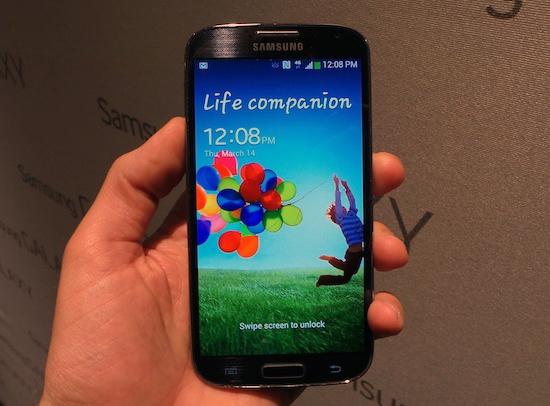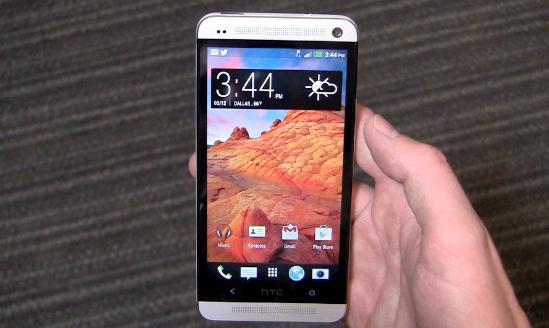
Plastic has made its way into jet fighter cockpits, Formula One driver's seats, and NASA projects because of its low cost and durability. It only makes sense that smartphone manufacturers would make their flagships out of it, too.
As you've probably noticed, the Samsung Galaxy S 4's design language shares common roots with its predecessor. That includes the plastic on the S III. To some, it's a deal breaker, and I completely understand. But you do realize Samsung hasn't made a Galaxy device out of anything else, right?
Then there's the aluminum-clad HTC One which screams quality. From the matte back right down to the glossy edges, the aluminum shell of the One is a triumph in design. Some would say it fits the price tag. But that's definitely at the expense of durability.
I can relate to the arguments against plastic. It’s not visually appealing. It feels cheap. It’s much less to look at than a single piece of aluminum. I completely agree that some matte and shiny bits on a piece of aluminum look plain awesome. From a design standpoint, you really can’t top it. I hear you. Glass could be part of that argument as well. Since the iPhone 4, we’ve seen even more glass devices pop up in tribute. It exudes premiumness and quality unlike any other. Unfortunately, it’s just as prone to catastrophic damage as its aluminum brethren. Corning is doing its best with their Gorilla Glass 3, and Willow, but it will come at a price to manufacturers.
Somewhere down the line, someone determined that plastic equates to less of a device than the aluminum and glass competition. And I get it. When shelling out $600-$900 for a smartphone off contract, you have every right to demand it feels and looks the part. The outer shell of the device is what first catches the eye, and naturally we want it to look the part of anything else we’d pay that much money for. Plastic might not be the best looking outer casing for your Samsung Galaxy S 4 as compared to the HTC One’s aluminum shell, but it certainly wasn’t put there for no reason.
It’s durable and easy to mass produce. Plastic has clear benefits that aluminum and glass cannot best. It’s light. Any polycarbonate device is lighter than the same device made out of aluminum, or glass. One of HTC’s main reasons for using polycarbonate in the One X was weight. Nokia prefers polycarbonate in the Lumia line because of the way it retains colors. They take design seriously, and you can’t blame them for believing that color and durability play a larger role in design than feel.

Then there’s the cost savings. When it comes down to it, the fact that manufacturers are using plastic as the outer shell makes complete sense. In place of aluminum or glass, manufacturers are able to spend more on the internals. You could argue that smartphone pricing has only gone up over the past few years, but so has the technology inside. Everything from the processor to the flash memory, to the modems and camera sensors have gotten smaller. The size of the parts inside our devices is driving prices up more than the materials used. I agree that smartphones have become very expensive, but plastic is being used for far more reasons than simply cost savings.
Remember, not all plastic is created equal. Every manufacturer has their version of it. Here are some quotes on plastic/polycarbonate and why it’s the material of choice for some manufacturers.
Nokia's Nicola Ralston on polycarbonate: “We chose polycarbonate because of the colour approach we wanted to take – the ingredients that make up polycarbonate allow us to get the best intensity of colour.”When I first got my Nokia Lumia 800, I told all my friends about how natural it feels in my hand. Again, this is largely down to the polycarbonate."
“The polycarbonate gives us a human touch – that is the best way to describe it,” says Nicola.“What we want to achieve with the Lumia range is absolute top performance. The colour ability with polycarbonate is giving us all that character but at the same time it enables the highest performance relative to the antenna, NFC enablement, wireless charging and so on.”
Samsung’s Mobile Business Executive Vice President YH Lee on plastic: “Since we are shipping really large units, we always have to think how efficiently we can manage the manufacturability and also durability,” Lee told CNET.
“I think the next product has a nice balance (between metals and high-quality plastics),” she said. “We listen to the market and try to accommodate.”
So, what’s your beef with plastic? Aren’t the most rugged cases made out of plastic? Is plastic really that bad? Do you feel that plastic really lessens the appeal of a device? Let me know below!